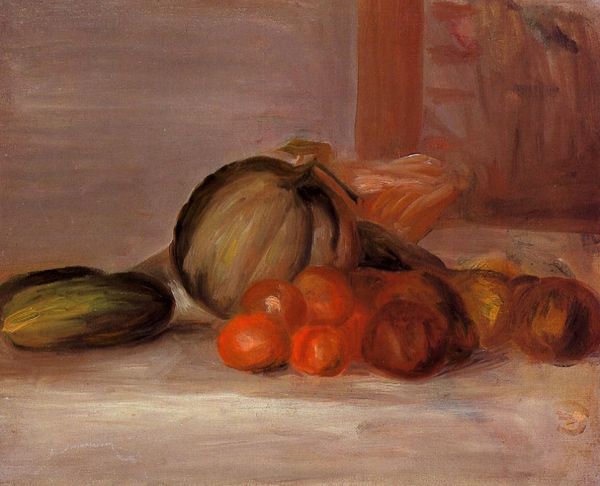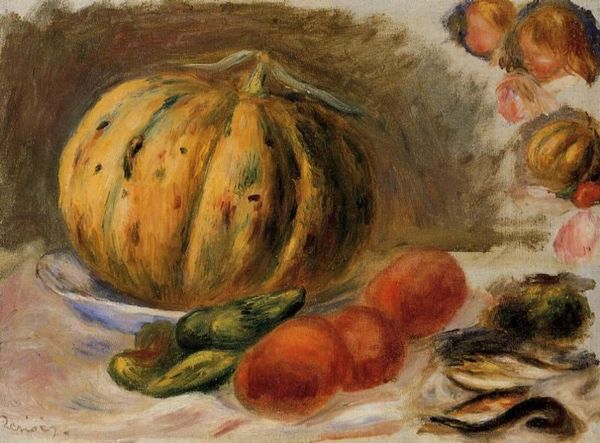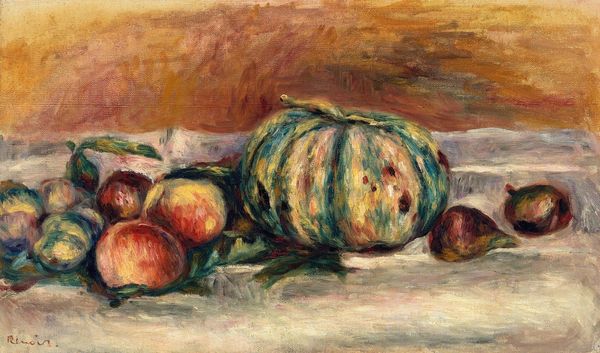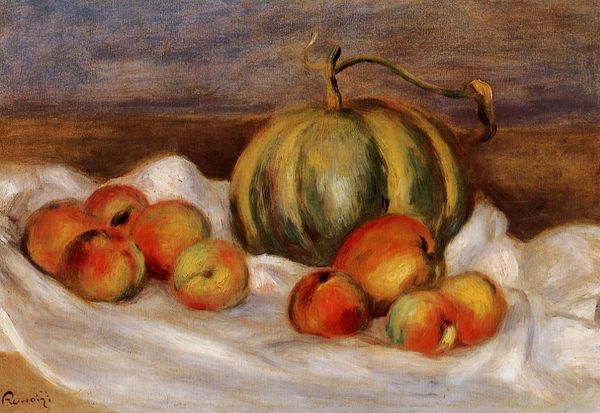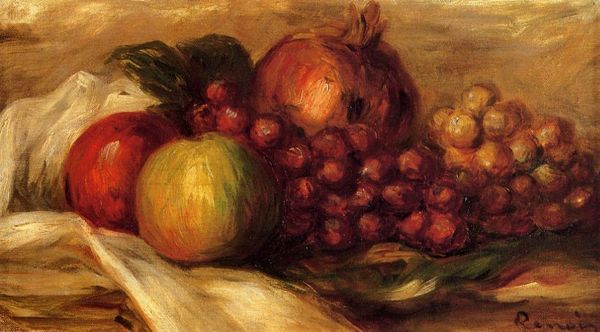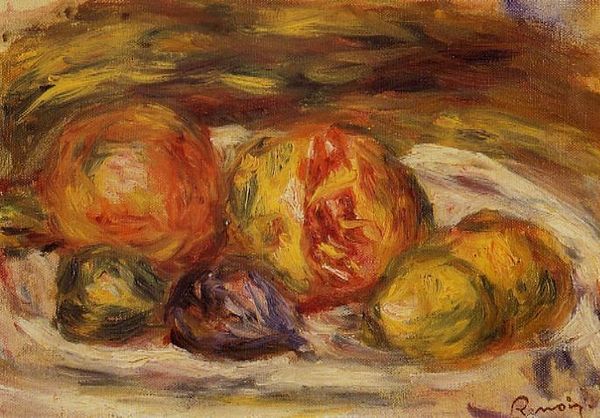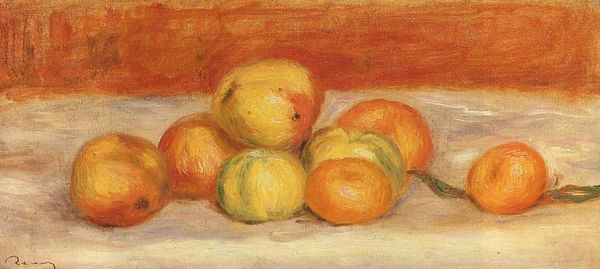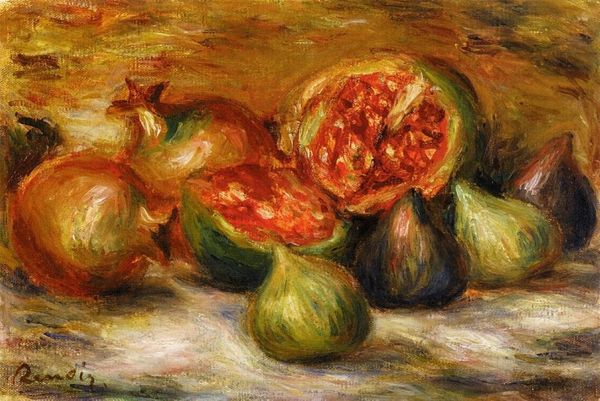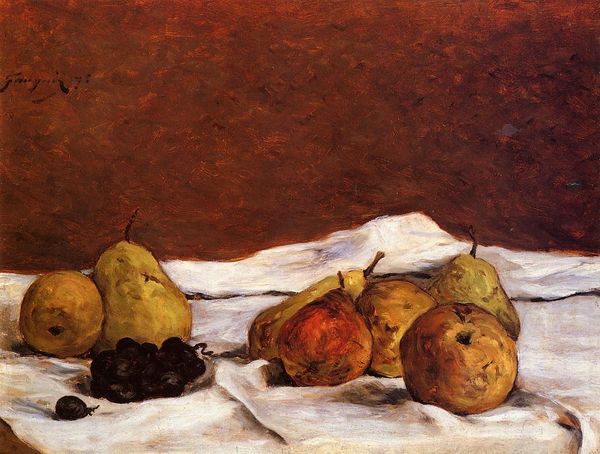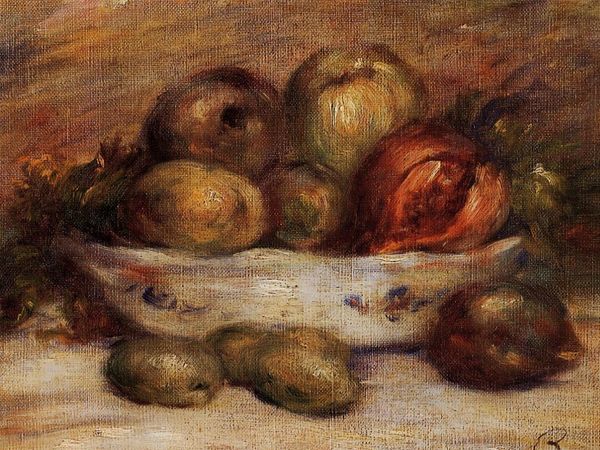
painting, oil-paint, photography
#
still-life
#
food
#
painting
#
impressionism
#
oil-paint
#
photography
#
oil painting
#
fruit
#
plant
#
post-impressionism
Copyright: Public domain
Pierre-Auguste Renoir made this oil painting, Cauliflower and Pomegranates, likely in France near the end of the 19th century. Renoir was a leading figure in the Impressionist movement, and he was particularly known for his depictions of modern life and the female figure. Still life painting in 19th century France was often viewed as a conservative, academic genre, and it was practiced by artists who wished to demonstrate their technical skill. However, Renoir was interested in pushing the boundaries of the genre. The loose brushwork and the unconventional composition challenge traditional notions of beauty and representation. Note how the angle of the table is skewed and unnatural, denying us a stable view. Renoir uses the still life to subtly question the established norms of the art world and explore new ways of seeing. To fully understand this painting, it's important to consider the institutional context of the art world at the time. Art historians can learn more from exhibition records, critical reviews, and other primary sources to gain a deeper understanding.
Comments
No comments
Be the first to comment and join the conversation on the ultimate creative platform.
